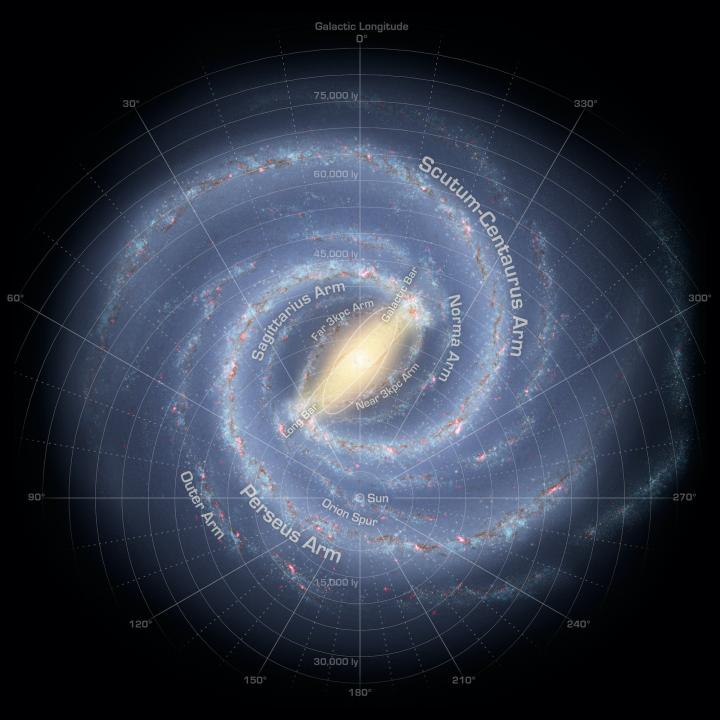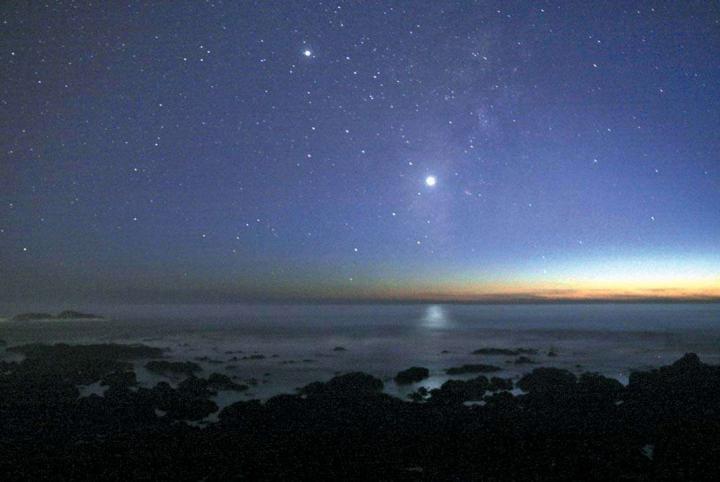Does your mind puzzle about the cosmos as it spreads across the heavens during these carefree summer nights? It’s probably the lure of the unknown that keeps me repeatedly peering upward. If you enjoy mysteries and curiosities, there’s no doubt you’re a skywatcher, too!
Being a Night Sky Detective
What’s particularly strange is that what most people regard as most awesomely mysterious—things like black holes—are actually the smaller puzzles that are potentially solvable. Granted, they’re undeniably strange.
My questions are limitless.
- Why do the sky’s only two naked-eye disks or circles (Moon, Sun) each have the same size from Earth, letting total solar eclipses happen whenever one fits precisely over the other?
- Why is there a permanent hexagon at Saturn’s north pole?
- What was that weirdly dark and elongated object named Oumuamua that recently flew through our solar system after originating somewhere near the blue star Vega?
It’s not a question of faith; one of the great things about astronomy is that there is still so much out there for us to discover. Just as we solve complex math puzzles or tackle Olympian feats, there’s always a puzzle or challenge to grow our minds and horizons.
Mysteries of the Summer Sky
While the list is endless, let’s back up and tackle the most basic mystery of all: What is this place? What is this universe? We were born into a realm of sights, events, and experiences. A place we call the cosmos. What is it?
This is a good question for the summer of 2021 because from now through October everyone who can get away from bright city lights will see an obvious glow crossing the sky that Renaissance scientists called the Via Galactica – Milk Boulevard.
1. The Milky Way in Summer
The Milk Way is a faint band of light that stretches from horizon to horizon. If you don’t live in a place with dark skies, it may appear as a dark narrow cloud and that is all. However, under dark skies, the Milky Way is magnificent and so extremely bright with stars that it will take your breath away.
Galileo was the first to see the Milky Way Galaxy in 1610. Instead of seeing a cloud, he saw countless stars through his simple telescope. Many folks thought the stars were a fixed galaxy far far away.
Now we know that the “Milky Way” is actually our OWN galaxy of stars. What we are viewing is our own flat pancake-shaped galaxy as seen from our interior perspective! Earth is located in one of the spiral arms of the Milky Way (called the Orion Arm) which lies about two-thirds of the way out from the center of the Galaxy.
In the summer months (June, July, August), all of us on Earth are facing toward the center of the Milky Way galaxy. It spans the night sky from south to north. When you look up at stars in the night sky, you’re seeing other stars within the Milky Way itself. In the winter, we are looking away from the crowded center of the galaxy.
All the stars and planets you can see are part of the Milky Way galaxy.
It’s no longer a big mystery but it’s a common question that still fascinates sky watchers. Learn more about how to see galaxies in the night sky.

2. Planet Venus in Summer
Also dominating the heavens all this summer will be the sky’s brightest “star” – the planet Venus, visible each evening just to the left of the sunset. It still possesses puzzles, yet we understand much about the nearest planet to Earth.
One of the biggest mysteries about Venus is why is this planet—about the same size of Earth—so very different? For example:
- Venus has a surface temperature of nearly 482 °C (900 °F), and the pressure of its carbon dioxide atmosphere is 95 times that of Earth’s atmosphere.
- Its clouds are sulfuric acid and trap the infrared radiation, heating the planet.
Was Venus was once habitable, like Earth? It seems as if there are signs of past water in the atmosphere but where did this water come from?
Also, why is Venus the only planet that spins backwards? Did the planet collide with another option that changes its rotation? Did the gravitational pull from the Sun created tides that flipped the planet’s axis?
There are still a few headscratchers.

3. Jupiter and Saturn in Summer
Closer to midnight is the second brightest “star” – and this is Jupiter, the largest planet. We know this Giant Planet by its thick stripes and Great Red Spot which has been swirling for centuries. Jupiter was the first planet to form in the solar system, created from the leftovers of the Sun. It’s magnetic field is 14 times stronger than Earth’s and has more Moons that any planet in the Solar System.
But how far do the swirling clouds and colors go down? What is life beneath the clouds? The Galileo spacecraft dropped a probe and learned that the Great Red Spot was quite deep — 50 to 100 times as deep as Earth’s oceans. But the probe didn’t hit a surface. It’s all gas. So, did Jupiter ever have a core? We have never actually seen that a core exists.
To Jupiter’s left in the night sky all summer — and bright but not brilliant — is yet another “star,” which any backyard telescope reveals is surrounded by gorgeous rings. And this is – well, never mind, you know very well what this ringed planet is. Saturn!
What is the Universe?
Let’s get back to the big mystery. What is the universe? Let’s first offer the explanation heard in every science classroom around the world:
The universe is a vast ball of matter and energy made mostly of hydrogen whose number of atoms can be expressed by writing down the number “1” followed by 86 zeroes. The whole thing seems to have popped out of nothingness 13.8 billion years ago, with an initial size similar to that of a marble. Nobody has any idea how this could have happened or what the antecedent conditions were.
As big a mystery as this very basic image conjures, it’s topped by such imponderables as how the universe’s four forces, which have precisely the same strengths everywhere, created things like hummingbirds, Albert Einstein, and Count Basie. In short, how the cosmos came up with awareness.
To the geniuses who created quantum mechanics a century ago, and who, with no small amazement, saw that their mere presence altered the results of their physics experiments, awareness started to seem like some bedrock property of the cosmos rather than some curiosity accidentally cooked up on one planet and perhaps many others. Several, such as Werner Heisenberg, who won the 1932 Nobel Prize in physics, concluded that consciousness is “absolutely fundamental,” meaning it’s a baked-in property of the universe rather than something that comes and goes.
So right now, while very briefly tackling the mysteries of what this universe is, let’s ignore that global definition of “universe” disseminated by scientists. Just for this moment as we gaze into the summer sky, let’s not see ourselves as accidental creations of an insentient cosmos, that dumb, random entity born mysteriously 13.8 billion years ago.
Instead, let’s allow ourselves to share the view of the Quantum Gang. Which is to define the universe as a self-aware entity. Among the many spin-offs that invariably follow is that while brains are associated with awareness, the brain is not its originator. Indeed, as they all believed, no variety of matter, whether chemical elements or brain tissue, can make consciousness arise.
Such an independence from neural tissue and from energies or elements like carbon and oxygen, and from any sort of reliance on time, also leads to death as being imaginary.
Musings for summer nights, indeed.











